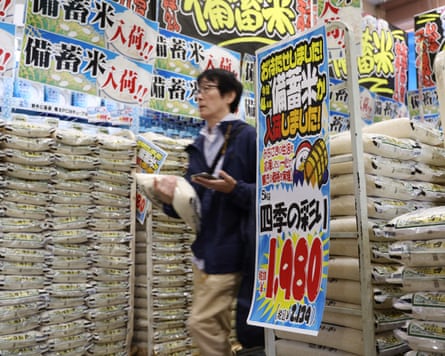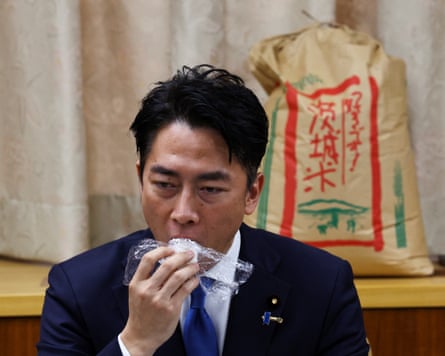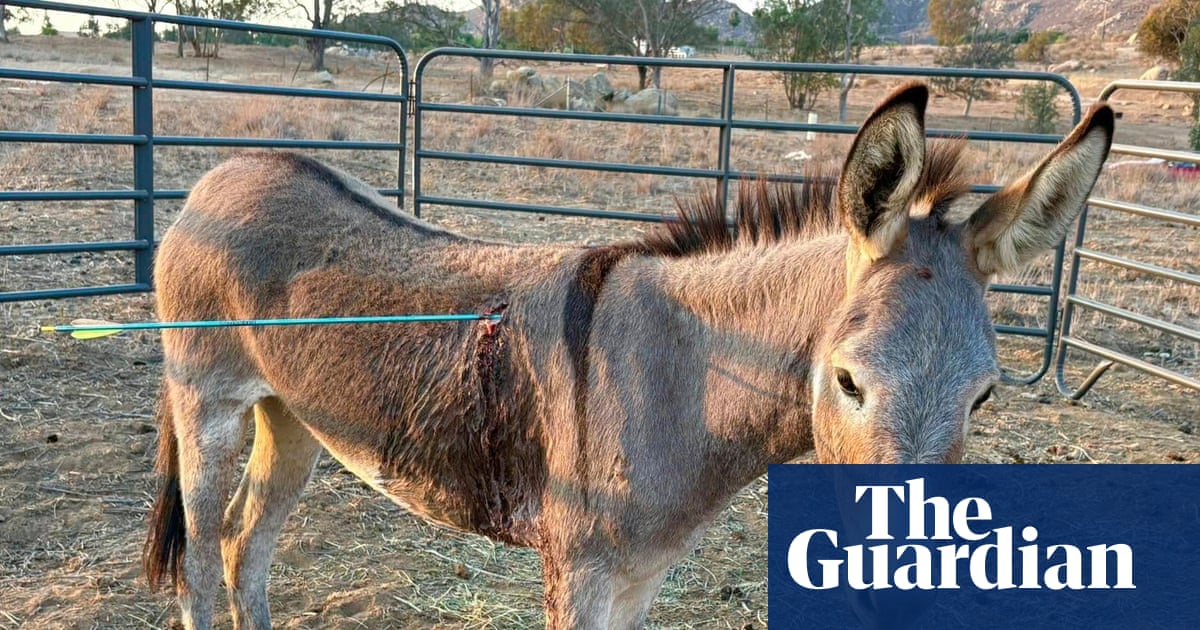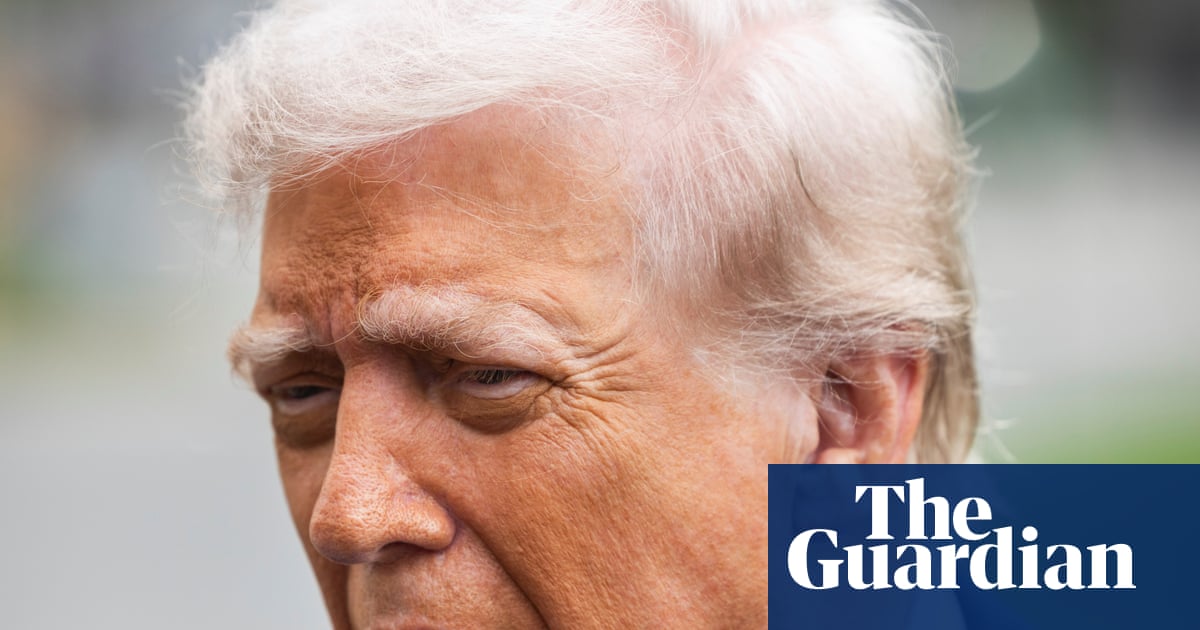It’s cheap, filling and a time-honoured way for office workers to calm their hunger pangs. Lunchtime diners at fast-food restaurants in central Tokyo are here for one thing: gyudon – thinly sliced beef and onions on rice. The topping is rich and moreish, but it’s the stickiness of the plump japonica grains beneath that make this one of Japan’s best-loved comfort foods.
Rice cultivation in Japan stretches back thousands of years. In the Edo period (1603-1868), a meal for most people meant a simple bowl of unpolished grain, while members of the samurai class measured their wealth in rice bales.
But the Japanese staple is in trouble, buffeted by soaring prices, a fumbled political response, and the spectre of real competition from “inferior” foreign imports.
The “Reiwa rice crisis” is about more than pressure on household finances. In just a few months, it has led to the resignation of a cabinet minister, triggered radical changes in how the staple is distributed, and sparked concern that a homegrown foodstuff that sustains millions of families faces an existential threat.
“Rice was once at the heart of everything – the family, the village and ultimately the nation … that’s why it is so important, even now,” said Hideyuki Suzuki, chair of the Japanese Association of Rice Taste Appraisers.
Successive governments have protected farmers by tightly controlling supply, ensuring that all but a tiny quantity of rice sold in stores and restaurants is homegrown. Protectionism keeps prices high – an arrangement that has suited farmers and which consumers have come to tolerate – but it is also affecting supply. Japan may import 60% of its food, but rice should always be the exception, so the thinking goes.
But the political and cultural insulation of Japan’s beloved grain is falling apart, amid a doubling in prices and anger among consumers who say their interests always come second to those of farmers – traditionally strong supporters of the ruling Liberal Democratic party (LDP).

Stockpiles, already depleted by record-breaking temperatures that affected the 2023 crop, shrank again last year, partly due to demand from record numbers of tourists. Supplies were also hit by panic buying in the wake of typhoon and earthquake warnings, forcing some retailers to restrict sales.
This March, as prices spiralled, the government took the unprecedented step of releasing 300,000 tonnes of rice from its stockpiles. The measure had little effect, however. By the second half of May, the average retail price of rice sold at supermarkets was ¥4,285 (£22) for 5kg – still double that of a year earlier.
As angry consumers wondered what had become of the promised flood of cheaper rice – only modest quantities were appearing on supermarket shelves – politicians blamed wholesalers and distributors for hoarding stocks in anticipation of further shortages.
The gridlock opened the door to a potential solution few would have countenanced just a few years ago: supplies of imported rice that go well beyond the 770,000 tonnes Japan already brings in tariff-free under a 1993 “minimum access” quota, agreed during Uruguay round of trade negotiations.
Last Friday, short-grain Calrose rice from California went on sale at Aeon, Japan’s largest retailer, priced at |¥2,894 for 4kg – about 10% cheaper than its Japanese counterparts, even accounting for tariffs. The agriculture ministry has approved imports of South Korean rice for the first time in a quarter of a century, while Vietnam plans to ship more than 20,000 tonnes this year – more than four times last year’s total. Taiwan exported more than six times as much rice to Japan in the first five months of this year than in the same period in 2024, and producers in Thailand say they are poised to exploit a rare gap in Japan’s market.
The influx has sparked debate on the relative merits of Japanese and imported rice, with expert tasters drafted in to offer their verdicts. They include Suzuki, who pronounces it “not bad at all”, particularly in curry, pilaf and risotto.
The growing appetite for imported rice has created a headache for the LDP as it tries to keep farmers onside while addressing a growing consumer outcry weeks before national elections that will be dominated by the cost of living.
“We have never seen this much stock of imported rice brands on supermarket shelves,” an official from the National Federation of Agricultural Cooperative Associations told the Asahi Shimbun. “We are concerned that customers will turn away from domestic rice and choose imported options in the future.”
The debate is also playing out on social media: a clip posted this week from the cuisine-inspired anime Oishinbo, in which the central character, the food journalist Shiro Yamaoka, lectures an American politician about the superiority of Japanese rice, has received more than 200,000 views.
But it is not only imported rice that has been subjected to the taste test. In another attempt to calm prices, the new agriculture minister, Shinjiro Koizumi, has approved the release of hundreds of thousands of tonnes of cheaper stockpiled rice from the 2020, 2021 and 2022 harvests.

Kozumi, who replaced his predecessor last month after he boasted he never had to pay for rice thanks to gifts from supporters, insisted that the grain be shipped directly to sellers to break the logistical gridlock.
The measure made a dent in the average price – and 5kg bags of 100% “old” grain are retailing for about ¥2,000 – but it also prompted accusations that consumers were being forced to buy inferior produce that one opposition politician described as “animal feed”.
With the next harvest still months away, imports will continue to fill the gap, even though previous experiments with imported rice fared badly. After a catastrophic crop failure in 1993, Japan urgently imported rice from the US, China and Thailand, only for it to be shunned by consumers worried about its safety and suitability for Japanese palates.
“I think people have become more open to foreign rice since then,” Suzuki said. “It’s much better than it was back in the 1990s.”
Kunihiko Osafune, a food expert who runs the Okawari (another helping) Japan website, said Californian grain was ideal for dishes with robust flavours, such as gyudon and curry, while onigiri and sushi benefited from the more delicate flavour of Japanese rice.
“In the past, a good rice crop was a symbol of overall abundance, so I understand why it has become such a big issue beyond the price,” said Osafune, who travels the country in search of ingredients that pair well with rice. “If there wasn’t enough rice, it was seen as a bad sign for the country as a whole,” he added, noting that Japan’s emperors traditionally plant and harvest a symbolic rice crop in the grounds of the imperial palace.
But even if prices drop to levels low enough to placate consumers, Japan’s relationship with rice will have to adapt, as depopulation, changes in diet and an ageing, shrinking agricultural sector open the door even wider to imports.
“It’s quite possible,” warned Osafune, “that in the near future we will no longer be able to eat Japanese rice.”

.png) 3 months ago
37
3 months ago
37

















































